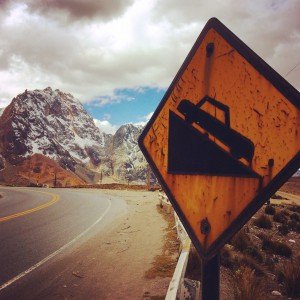After arriving in Lima after a 6hr delay in Houston I took a shuttle bus with the rest of the science party up to Tarma, our base for the NSF and ICDP funded Lake Junin Drilling Project. Tarma is at 10,000ft but to get there from Lima we had to negotiate Ticlio pass which rises up to nearly 16,00ft. The roads were steep, the views spectacular, and the altitude dizzying!
The drilling equipment is still hanging out in the customs yard in Lima so after acclimatizing in Tarma for a few days and gathering much needed supplies we went up to Lake Junin to start taking some transect cores across the lake using Livingston and surface cores. Lake Junin is at 14,000ft and is the second largest Lake in Peru, 35 km long and 30 km at its widest point. The drilling project aims to drill 200 m down into the sediments collecting at the bottom of the lake, potentially retrieving a 500,000 year record of climate and environmental change in the region.
While waiting for the drilling barge to arrive we have built a platform over two inflatable pontoons to core from. After anchoring the platform we started by taking a surface core followed by 9 meters of Livingston Core. Three to four transitions in the core showed that we got back to the glacial transition and we were looking at sediments that were deposited in the lake over 12,000 years ago. The next few days will be much of the same, building and prepping for the arrival of the drilling barge, coring, and trying to acclimatize and not get sunburnt!


